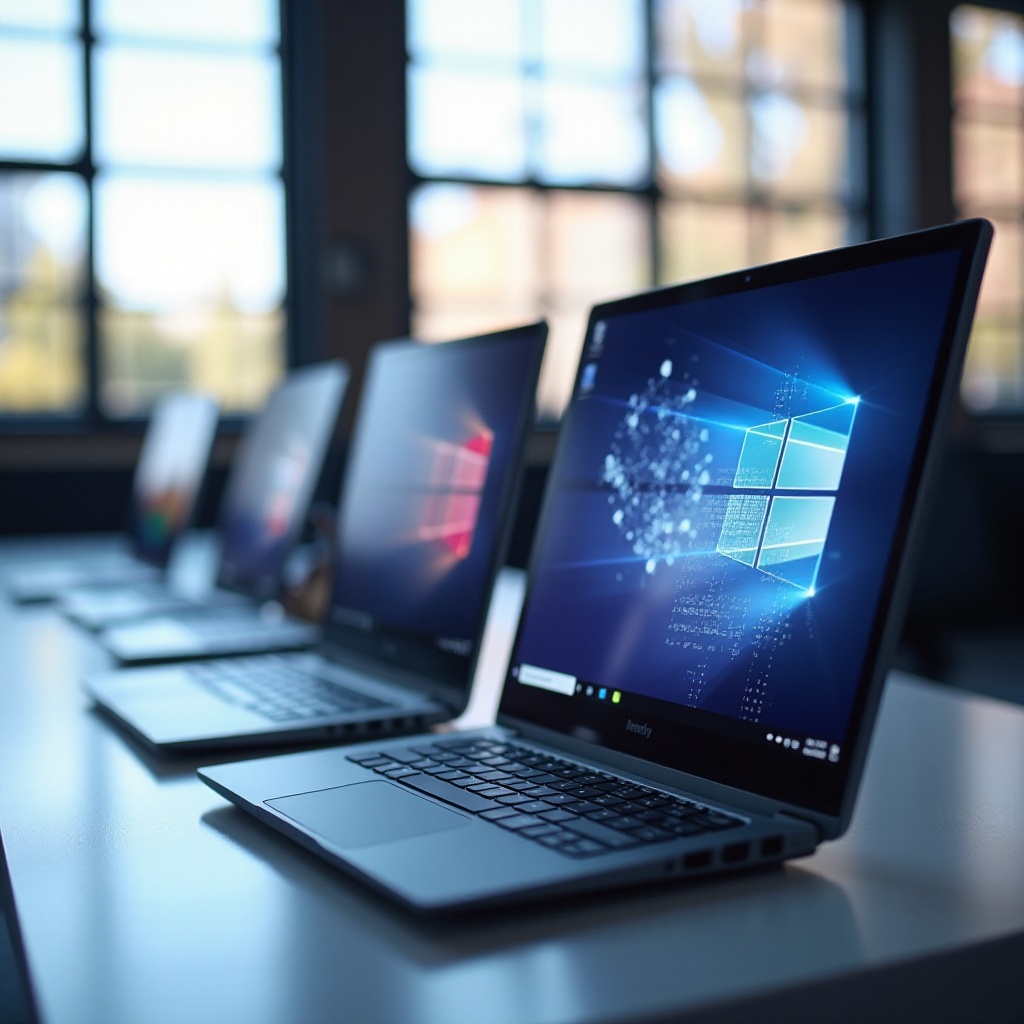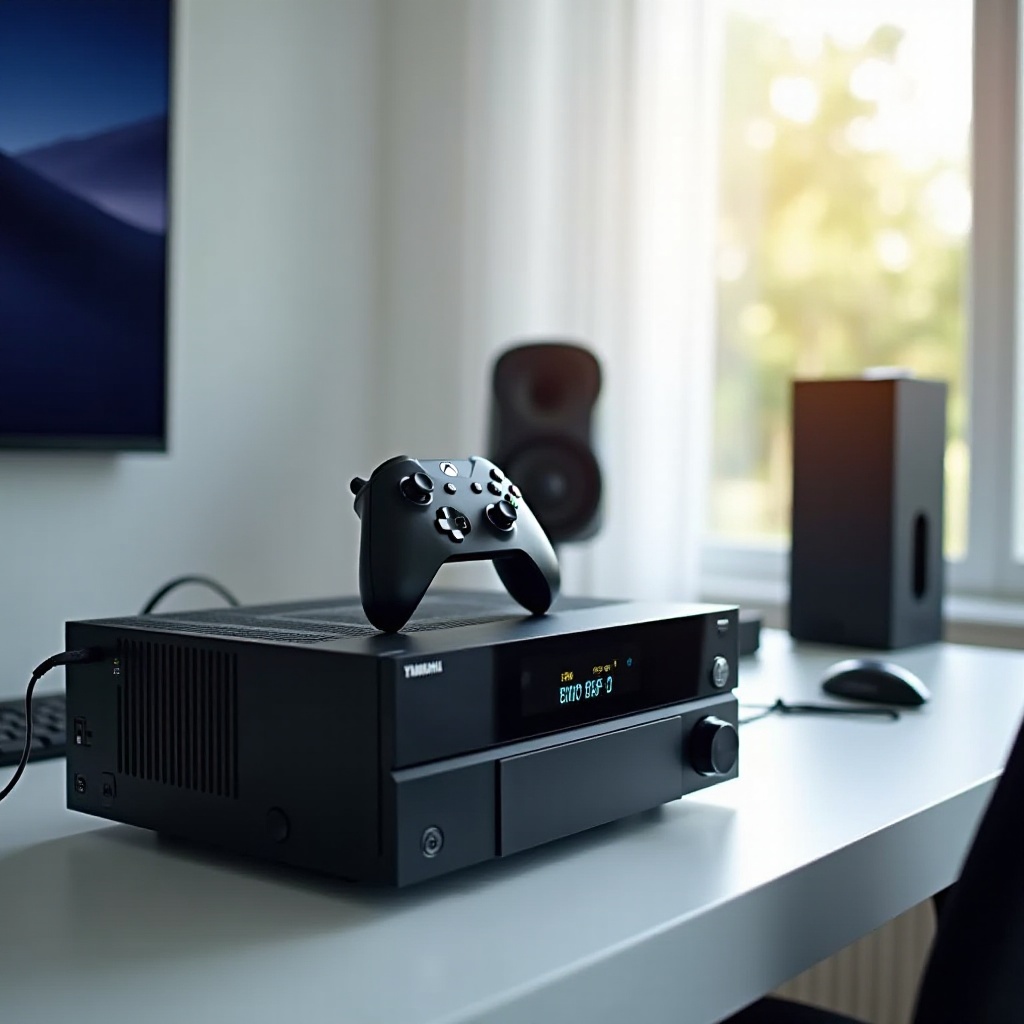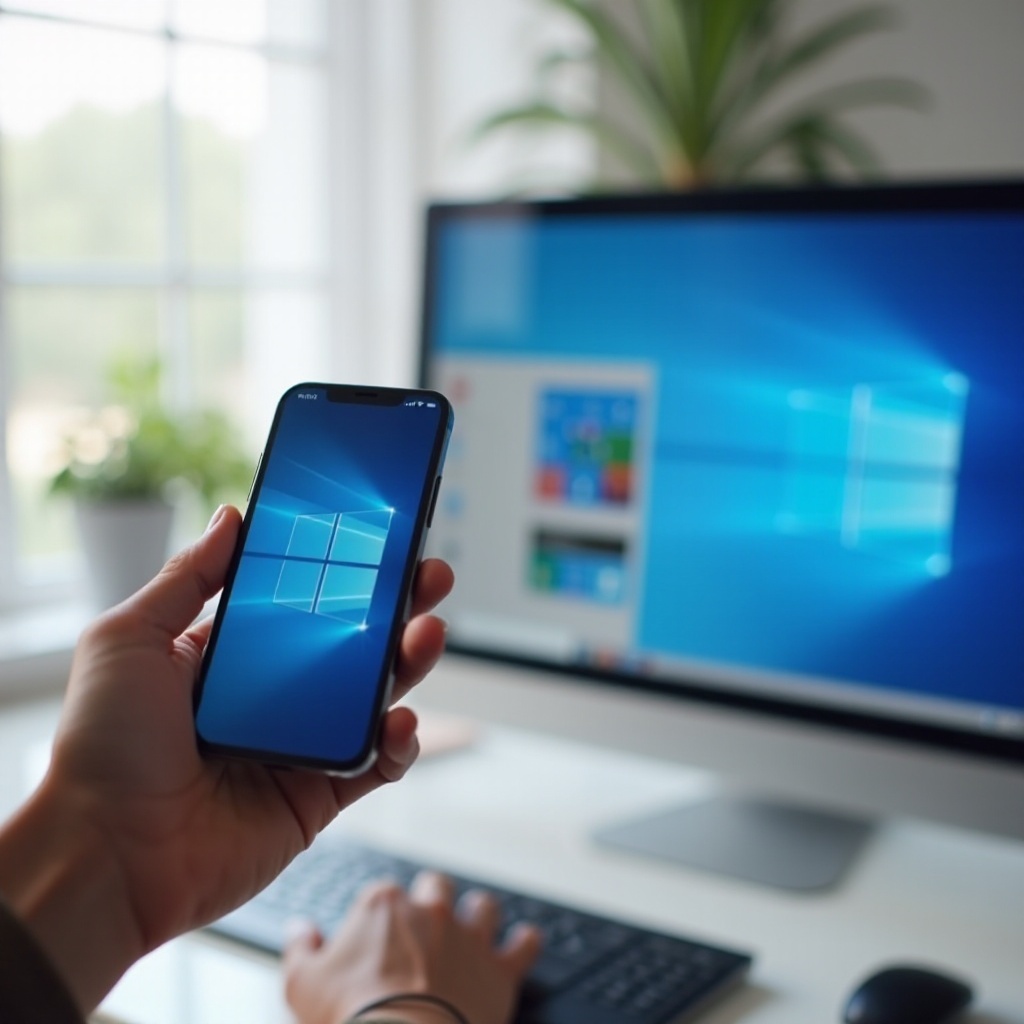Unlocking the Power of Mini PCs with Docking Stations for GPU Integration
Introduction
Mini PCs are rapidly gaining popularity for their compact size and impressive capabilities. As technology advances, so does the need for more powerful computing solutions. Many users seek to enhance the performance of their Mini PCs, especially in areas such as gaming, graphic design, and video editing. One effective way to achieve this is through the use of a docking station that integrates a powerful GPU. This article explores the potential of your Mini PC when combined with a docking station to elevate GPU performance, making it suitable for various demanding applications.
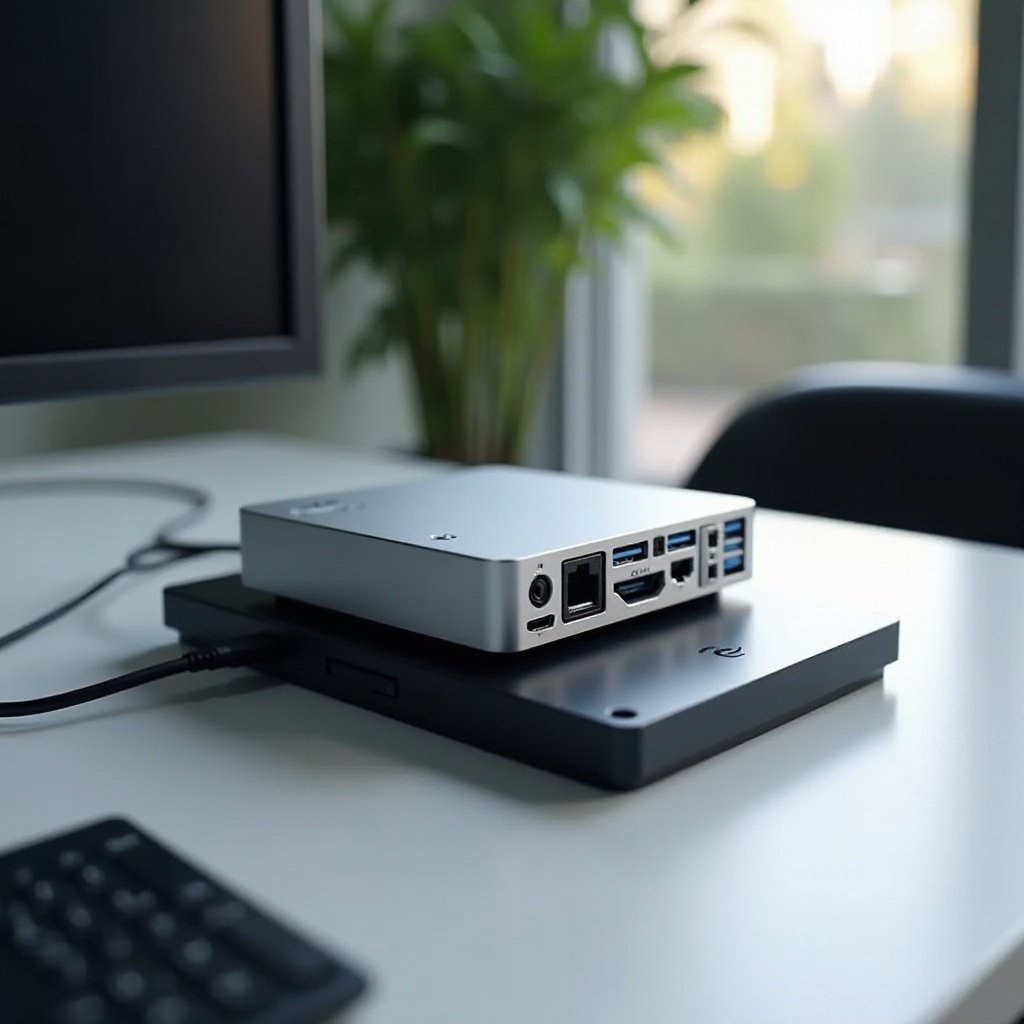
Understanding Mini PCs
What are Mini PCs?
Mini PCs, also known as small form factor PCs, are compact and space-saving computers that offer similar functionality to traditional desktop computers. Despite their small size, they pack considerable processing power, making them suitable for everyday tasks, multimedia consumption, and even some professional work. Mini PCs are favored for their portability, energy efficiency, and versatility.
Advantages and Limitations
Mini PCs offer several advantages, such as:
- Portability: Lightweight and compact, Mini PCs can be easily transported and set up in different locations.
- Energy Efficiency: These devices typically consume less power than standard desktops, making them more environmentally friendly and cost-effective.
- Versatility: Mini PCs can be used for a range of applications, from home entertainment systems to office workstations.
However, they also come with limitations:
- Limited Internal Expansion: Due to their small size, there's limited space for adding internal components like extra storage drives or high-end GPUs.
- Cooling Challenges: Efficient cooling can be difficult to achieve in such a compact form factor, potentially leading to thermal throttling.
Typical Use Cases
Mini PCs are used in various scenarios, including:
- Home Entertainment: Ideal for streaming video, listening to music, or casual gaming.
- Office Work: Suitable for productivity tasks such as document creation, internet browsing, and email.
- Education: Used in schools and learning centers for educational purposes and virtual classrooms.
Understanding these aspects of Mini PCs sets the stage for exploring how docking stations can enhance their performance, particularly through GPU integration.
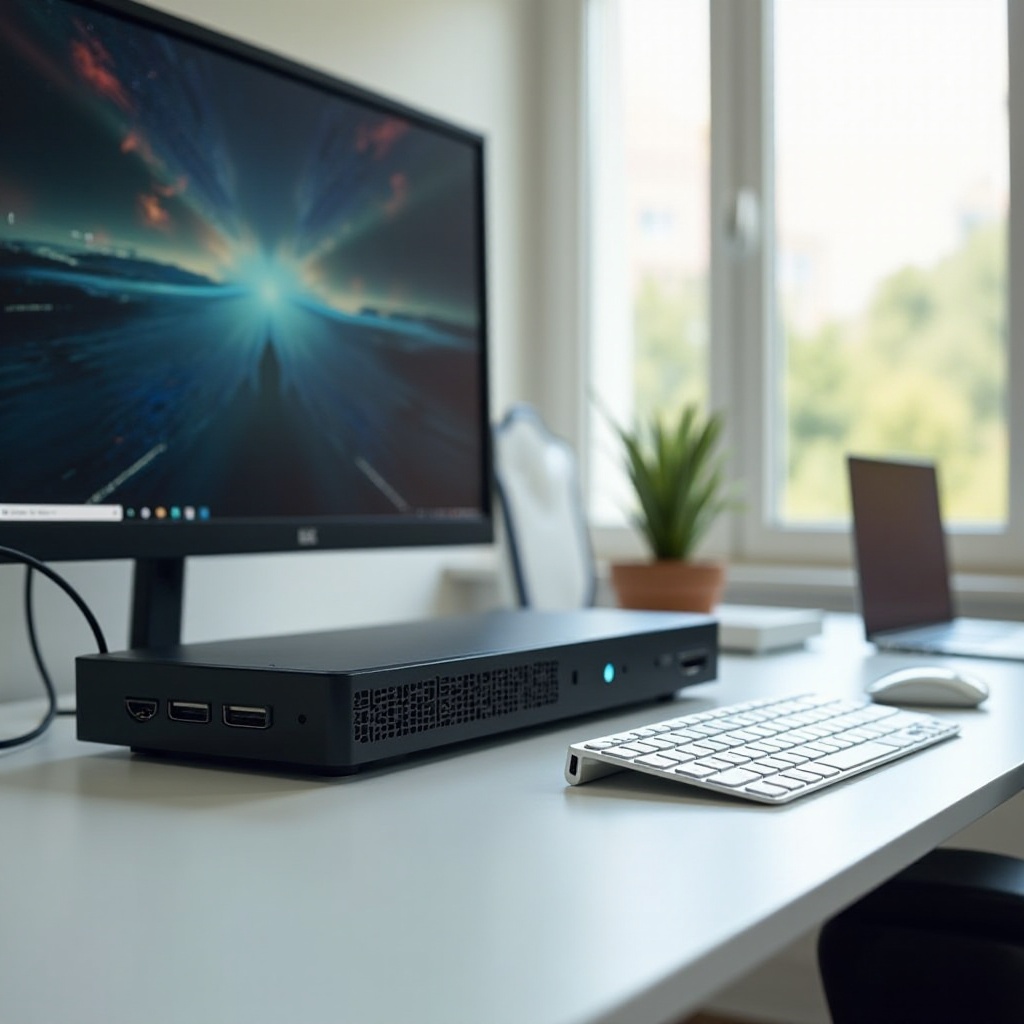
The Role of Docking Stations in GPU Integration
What is a Docking Station?
A docking station is a device that allows a Mini PC to connect to multiple peripherals and expand its connectivity options. It serves as a hub that connects to the Mini PC via a single port, typically USB-C or Thunderbolt, providing additional ports for USB devices, monitors, external storage, and more.
Benefits of GPU Expansion via Docking Stations
Integrating a GPU through a docking station offers numerous benefits:
- Enhanced Graphics Performance: External GPUs (eGPUs) significantly boost graphic processing capabilities, making Mini PCs suitable for high-end gaming, 3D modeling, and video editing.
- Upgrade Flexibility: Users can easily upgrade their GPU without replacing the entire Mini PC.
- Expanded Connectivity: Docking stations add ports for additional monitors, USB devices, and other peripherals, enhancing overall productivity.
How Docking Stations Work
Docking stations function by connecting to the Mini PC and communicating with the external GPU. The connection enables the Mini PC to offload graphic-intensive tasks to the eGPU, thereby enhancing its performance. This setup requires proper configuration and compatibility checks to ensure seamless integration and optimal performance.
By understanding the role and benefits of docking stations, we can now proceed to the key features to consider when selecting Mini PCs and docking stations.
Key Features to Look for in Mini PCs and Docking Stations
When choosing Mini PCs and docking stations, several key features must be considered to ensure compatibility and optimal performance.
Essential Specifications for Mini PCs
Consider the following specifications for Mini PCs:
- Processor: Look for powerful CPUs, such as Intel Core i5/i7 or AMD Ryzen 5/7, for better performance.
- RAM: Ensure at least 8GB of RAM, with the option to upgrade for improved multitasking.
- Storage: SSDs are preferred over HDDs for faster data access speeds.
- Ports: Multiple USB ports and HDMI/DisplayPort connections for peripherals and displays.
Important Features of Docking Stations
For docking stations, prioritize these features:
- Compatibility: Confirm that the docking station is compatible with the Mini PC and external GPU.
- Port Availability: Ensure it has enough ports for your needs, such as USB, HDMI, and Ethernet.
- Power Delivery: Check if the docking station supports power delivery to charge the Mini PC while in use.
- eGPU Compatibility: Verify that it can support an external GPU to enhance graphics performance.
Ensuring Compatibility
Compatibility is crucial when integrating a Mini PC with a docking station and external GPU. Make sure all devices are compatible by checking manufacturer specifications and user reviews. Compatibility checks help prevent any setup issues and ensure smooth performance.
Having explored the key features, let's examine some of the top Mini PCs compatible with docking stations for GPUs.
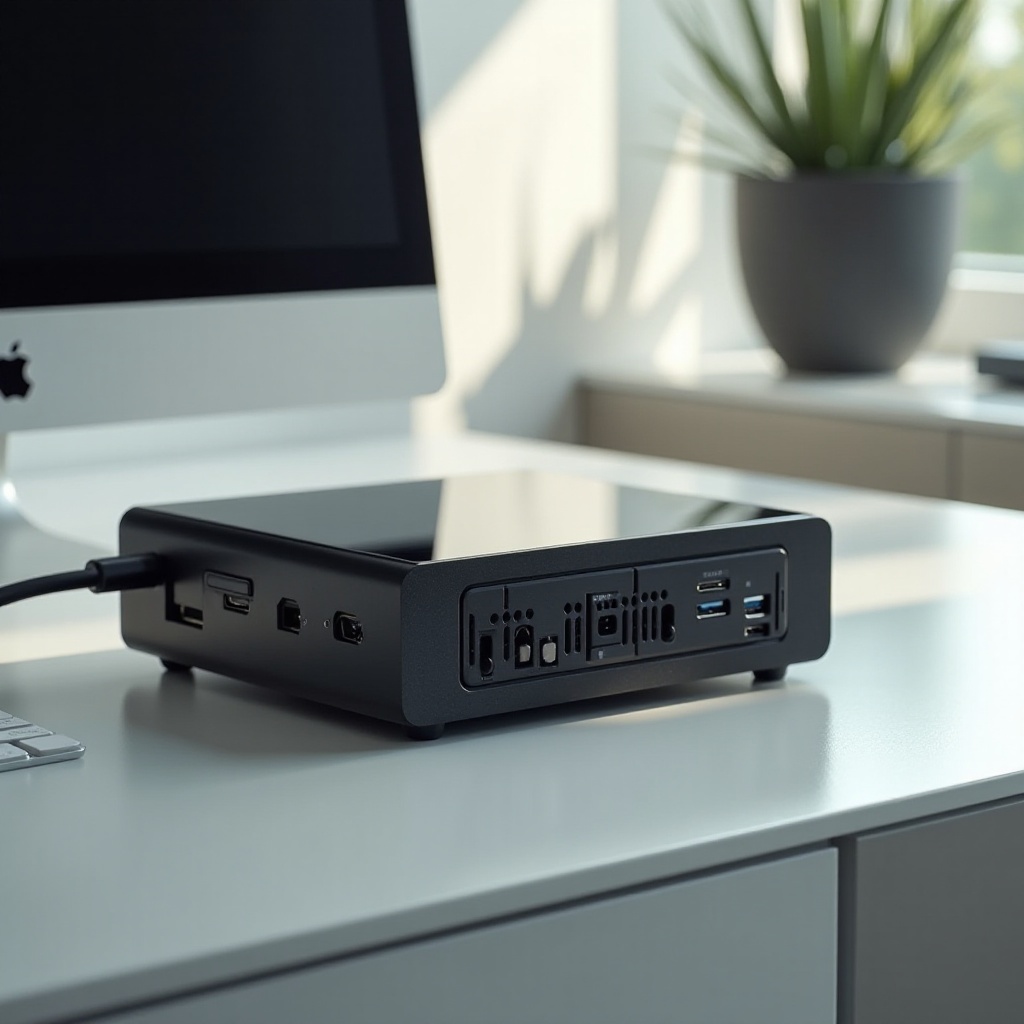
Top Mini PCs Compatible with Docking Stations for GPUs
Here are some top recommended Mini PCs that are well-suited for use with docking stations and external GPUs:
Mini PC Model 1: Specs and Benefits
- Processor: Intel Core i7
- RAM: 16GB
- Storage: 512GB SSD
- Pros: High performance, compact size, multiple connectivity options
Mini PC Model 2: Specs and Benefits
- Processor: AMD Ryzen 7
- RAM: 16GB
- Storage: 1TB SSD
- Pros: Powerful CPU, versatile use, extensive port range
Mini PC Model 3: Specs and Benefits
- Processor: Intel Core i5
- RAM: 8GB (upgradable)
- Storage: 256GB SSD
- Pros: Cost-effective, energy-efficient, user-friendly design
These Mini PCs offer a combination of performance, upgradability, and compatibility, making them excellent choices for enhancing with docking stations.
Best Docking Stations for GPU Enhancement
Let's look at some of the best docking stations available for boosting GPU capabilities:
Docking Station 1: Features and Compatibility
- Ports: 4 USB 3.0, HDMI, Ethernet, Thunderbolt 3
- Power Delivery: 85W
- eGPU Support: Yes
Docking Station 2: Features and Compatibility
- Ports: USB-C, 3 USB 2.0, dual HDMI, DisplayPort, Ethernet
- Power Delivery: 60W
- eGPU Support: Yes
Docking Station 3: Features and Compatibility
- Ports: 5 USB 3.1, HDMI, VGA, Ethernet, Thunderbolt 4
- Power Delivery: 100W
- eGPU Support: Yes
Each docking station offers varying port configurations and power delivery options, so choose one that fits your requirements and ensures optimal performance with your Mini PC and external GPU.
Installation and Setup Guide
Setting up your Mini PC with a docking station and external GPU involves several steps:
Step-by-Step Setup
- Ensure Compatibility: Verify that your Mini PC, docking station, and external GPU are compatible.
- Connect Docking Station: Plug the docking station into the Mini PC's designated port, usually USB-C or Thunderbolt.
- Attach Peripherals: Connect any additional peripherals (keyboard, mouse, monitors, etc.) to the docking station.
- Connect the eGPU: Attach the external GPU to the docking station, ensuring all connections are secure.
- Power On: Turn on the Mini PC and docking station. The Mini PC should recognize the eGPU automatically.
- Install Drivers: Install the necessary drivers for the docking station and eGPU. Manufacturers usually provide these on their websites.
Tips for Optimal Performance
- Regular Updates: Keep all drivers and firmware updated to ensure compatibility and performance.
- Proper Placement: Place the Mini PC and docking station in a well-ventilated area to prevent overheating.
- Cable Management: Use high-quality cables and manage them properly to avoid connection issues.
Troubleshooting Common Issues
- No Display Output: Ensure all cables are securely connected and the eGPU is powered on.
- Driver Issues: Reinstall the latest drivers from the manufacturer's website.
- Compatibility Conflicts: Double-check the specifications of all devices to ensure compatibility.
Following this setup guide will help you achieve a seamless integration of your Mini PC with a docking station and eGPU, enhancing performance across various applications.
Real-world Applications and Performance Insights
With your Mini PC and docking station setup complete, you can experience enhanced performance in various real-world applications:
Gaming Performance
With an eGPU, Mini PCs can run demanding games at higher resolutions and frame rates, providing a smooth gaming experience. The increased graphics power allows for ultra-settings in modern titles, making gaming more immersive.
Professional Creative Workloads
Tasks such as video editing, 3D rendering, and graphic design benefit significantly from an eGPU. Enhanced GPU power accelerates rendering times and improves multitasking capabilities, making Mini PCs suitable for professional creative work.
Everyday Productivity Enhancements
Even for everyday tasks such as browsing, streaming, and office productivity, an eGPU can provide a smoother and more responsive experience. Multiple monitor setups are supported more efficiently, boosting productivity.
These performance insights demonstrate the tangible benefits of integrating a docking station and eGPU with your Mini PC across various use cases.
Conclusion
Integrating a Mini PC with a docking station and external GPU is a powerful way to enhance performance for gaming, professional workloads, and everyday productivity. By choosing the right Mini PC, compatible docking station, and following the setup guide, you can unlock the full potential of your compact computing device. This comprehensive approach ensures that you make the most of your Mini PC's capabilities while enjoying the benefits of expanded GPU power.
Frequently Asked Questions
Can I use any GPU with a Mini PC and docking station setup?
Not all GPUs are compatible with every Mini PC and docking station combination. Always check the manufacturer specifications to ensure compatibility.
What should I do if my Mini PC doesn’t recognize the docking station?
Ensure all connections are secure, update drivers and firmware, and confirm that all devices are compatible. If issues persist, consult the manufacturer’s troubleshooting guidelines.
Are there any limitations to using a docking station for GPU expansion?
While docking stations enhance GPU performance, there may be some limitations due to bandwidth constraints or compatibility issues. Always refer to manufacturer guidelines to ensure optimal performance.
